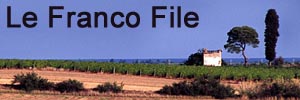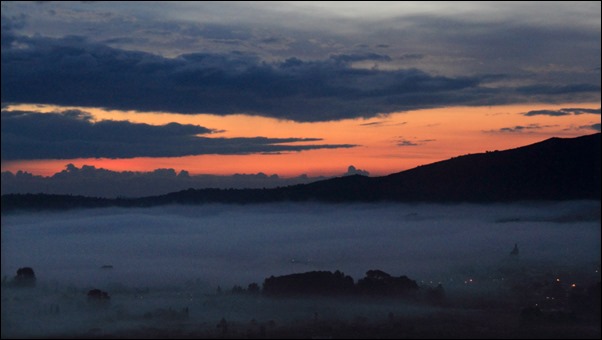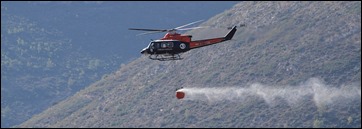That’s what the Spanish call it, anyway. We’ve heard of a gota fría before, though we didn’t know how to spell it. We’ve even seen a video of the Jalón river in spate as a result of a gota fría, complete with a car being swept away downstream.
 Now we are having the pleasure of experiencing a gota fría of our own and, of course, learning how to spell it so we can talk about it. Gota fría translates literally as “cold drop”. It’s a particular meteorological phenomenon that affects this Mediterranean coastal region of Spain. Most of what drops is seemingly biblical amounts of water. If there were any Spaniards called Noah, they would be hammering boats together furiously and saving bottles of wine, two by two. There are Spaniards called Jesus [pronounced Hay-soos] who could make very good use of their walking on water trick, should they happen to know one. The steps beside our house were transformed into a water fall this morning.
Now we are having the pleasure of experiencing a gota fría of our own and, of course, learning how to spell it so we can talk about it. Gota fría translates literally as “cold drop”. It’s a particular meteorological phenomenon that affects this Mediterranean coastal region of Spain. Most of what drops is seemingly biblical amounts of water. If there were any Spaniards called Noah, they would be hammering boats together furiously and saving bottles of wine, two by two. There are Spaniards called Jesus [pronounced Hay-soos] who could make very good use of their walking on water trick, should they happen to know one. The steps beside our house were transformed into a water fall this morning.
We have now had about 36 hours of biblical rain and, much as I didn’t want to venture outside with my cold, I was reminded that a workman was supposed to be turning up to fit our security gate across the entrance door, a measure against the miscreant burglars. I braved it and ventured out to get money to pay him.
Once I’d figured out how to control the rental car’s demisting system, – don’t you just love getting to grips with strange vehicles? – I drove gently into town through vineyard soil being washed away across the roads. Driving over the bridge into town I saw the river looking just as it did in the video of paragraph #1 but without, mercifully, a car floating down it. I should point out that from this viewpoint, there would normally be absolutely no water visible. [Video courtesy of Jim Murdoch, a brave Scot who can stand outside in such conditions.]
Speed bumps make for an interesting problem in these conditions: with kerb stones on two sides and speed bumps acting like dams on the other two, paddling pools form in the intervening road section, the water having no ready escape route. Every road in town was awash as I found a parking space and paddled my way to the bank, being drenched in a matter of a few yards. A lady ahead of me at the hole-in-wall machine mimed swimming back up the street.
I can’t imagine that our workman will turn up to fit the gate (I hope he doesn’t) but I’ve got the dosh … and a very wet pair of trousers.
































Recent Comments